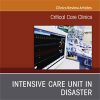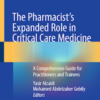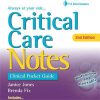Adjunct and Rescue Therapies for Refractory Hypoxemia
link.springer.comProne position, inhaled nitric oxide, high frequency oscillation, extra corporeal life support. The mortality of severe acute respiratory distress syndrome (ARDS), defined with a PaO2/FiO2 ratio of 100 mmHg or less with at least 5 cm H2O of PEEP, still exceeds 40%. Furthermore, although it is true that more ARDS patients die from multi-organ failure than hypoxemia per se, an important subgroup of severe ARDS do die from refractory hypoxemia often defined as a PaO2 <60 mmHg despite FiO2 1.0. Therefore, rescue treatments aiming at preventing hazardous hypoxemia are crucial. In this paper, we will cover prone position, inhaled nitric oxide (iNO), high-frequency oscillation (HFO) and extracorporeal life support (ECLS) as interventions to treat refractory hypoxemia. For each of them, we will discuss mechanism of action to improve hypoxemia, potential benefits and risks, and make a personal recommendation about use.

















